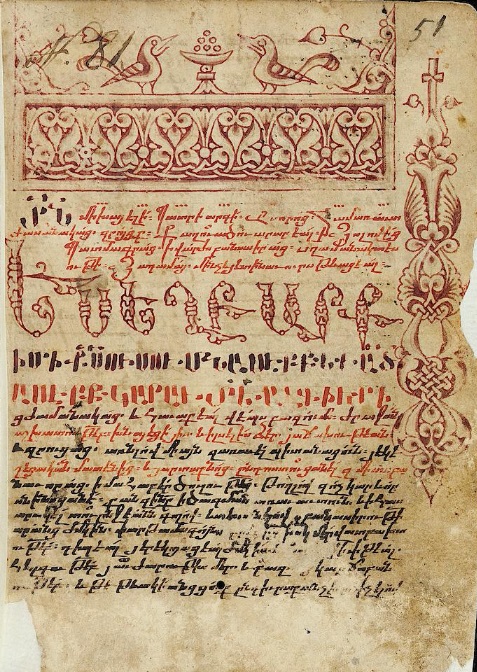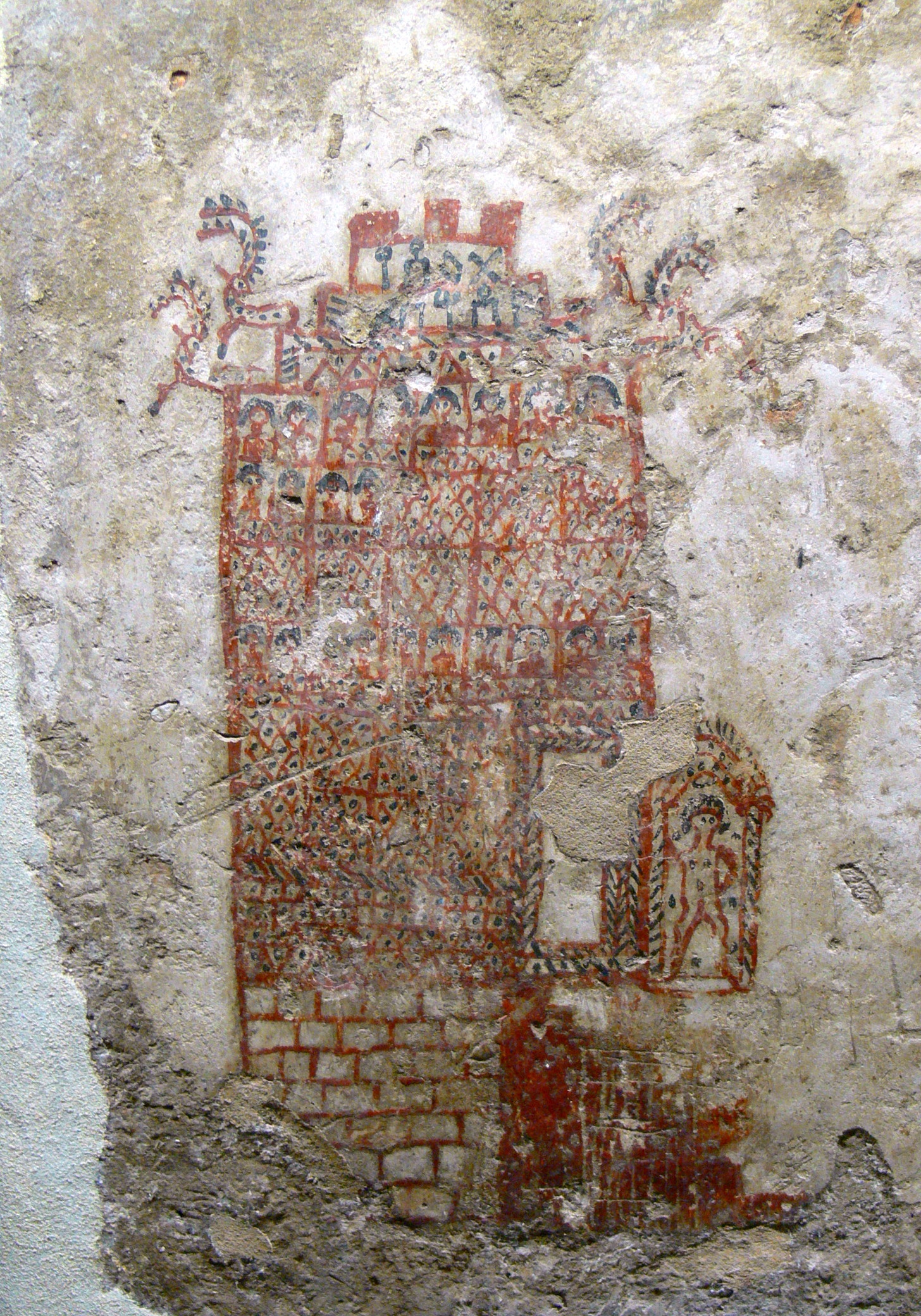|
Sumyafa Ashwa
Sumyafa' Ashwa al-Yazani, also known as Esimiphaios (Latin: Esimiphaeus) in Syriac and Greek sources, was a vassal king of Himyar, ruling in the 6th century CE under the Aksumite Empire. He was also the viceroy of the Aksumite king Kaleb, who had invaded Himyar and defeated Dhu Nuwas. Sumyafa' Ashwa was a native convert to Christianity. Archaeological Inscriptions There is an inscription mentioning Sumyafa' Ashwa, which commemorates the refortification of Bi'r `Ali from February 530 or 531 by a Sumyafa' Ashwa and his sons Sharhabil Yakmul and Ma'dikarib Ya'fur. He was the son of Lakhni'ah Yarkham, from western Ḥimyar and had been in exile in Aksum, only returning with the Aksumite invasion force.It is not certain that this was the same Sumyafa' Ashwa who was or became king of Himyar. Another inscription also indicates that Sumyafa' Ashwa was from the influential elite Dhu Yazan family. Some have suggested that Sumyafa' Ashwa was the father of the Himyarite prince, Sayf ibn D ... [...More Info...] [...Related Items...] OR: [Wikipedia] [Google] [Baidu] |
Dhu Nuwas
Dhū Nuwās (), real name Yūsuf Asʾar Yathʾar ( Musnad: 𐩺𐩥𐩪𐩰 𐩱𐩪𐩱𐩧 𐩺𐩻𐩱𐩧, ''Yws¹f ʾs¹ʾr Yṯʾr''), Yosef Nu'as (), or Yūsuf ibn Sharhabil (), also known as Masruq in Syriac, and Dounaas () in Medieval Greek, was a Jewish king of Himyar reigning between 522–530 AD who came to infamy on account of his persecutions of peoples of other religions, notably Christians, living in his kingdom. He was also known as Zur'ah in the Arab traditions. Names and family Dhu Nuwas' family is not very well known. There is debate on who his father is; the earlier Arab scholars and the Jewish Encyclopedia believed that Dhu Nuwas was the son of the earlier Himyarite king Abu Karib. However, Ibn al-Kalbi disagreed and stated that he was the son of Sharhabil Yakkuf, hence making him the great-grandson of Abu Karib. Ibn Abbas also reported that Dhu Nuwas' real name was Yusuf, son of Sharhabil, which was reported by Ibn al-Kalbi and Al-Baydawi and later o ... [...More Info...] [...Related Items...] OR: [Wikipedia] [Google] [Baidu] |
Sasanian Empire
The Sasanian Empire (), officially Eranshahr ( , "Empire of the Iranian peoples, Iranians"), was an List of monarchs of Iran, Iranian empire that was founded and ruled by the House of Sasan from 224 to 651. Enduring for over four centuries, the length of the Sasanian dynasty's reign over ancient Iran was second only to the directly preceding Arsacid dynasty of Parthia. Founded by Ardashir I, whose rise coincided with the decline of Arsacid influence in the face of both internal and external strife, the House of Sasan was highly determined to restore the legacy of the Achaemenid Empire by expanding and consolidating the Iranian nation's dominions. Most notably, after defeating Artabanus IV of Parthia during the Battle of Hormozdgan in 224, it began competing far more zealously with the neighbouring Roman Empire than the Arsacids had, thus sparking a new phase of the Roman–Iranian Wars. This effort by Ardashir's dynasty ultimately re-established Iran as a major power of late an ... [...More Info...] [...Related Items...] OR: [Wikipedia] [Google] [Baidu] |
6th-century Arab People
The 6th century is the period from 501 through 600 in line with the Julian calendar. In the West, the century marks the end of Classical Antiquity and the beginning of the Middle Ages. The collapse of the Western Roman Empire late in the previous century left Europe fractured into many small Germanic kingdoms competing fiercely for land and wealth. From the upheaval the Franks rose to prominence and carved out a sizeable domain covering much of modern France and Germany. Meanwhile, the surviving Eastern Roman Empire began to expand under Emperor Justinian, who recaptured North Africa from the Vandals and attempted fully to recover Italy as well, in the hope of reinstating Roman control over the lands once ruled by the Western Roman Empire. Owing in part to the collapse of the Roman Empire along with its literature and civilization, the sixth century is generally considered to be the least known about in the Dark Ages. In its second golden age, the Sassanid Empire reached the p ... [...More Info...] [...Related Items...] OR: [Wikipedia] [Google] [Baidu] |
Bulletin Of The School Of Oriental And African Studies
Bulletin or The Bulletin may refer to: Periodicals (newspapers, magazines, journals) * ''Bulletin'' (online newspaper), a Swedish online newspaper * ''The Bulletin'' (Australian periodical), an Australian magazine (1880–2008) ** Bulletin Debate, a famous dispute from 1892 to 1893 between Henry Lawson and Banjo Paterson * ''The Bulletin'' (alternative weekly), an alternative weekly published in Montgomery County, Texas, U.S. * ''The Bulletin'' (Bend), a daily newspaper in Bend, Oregon, U.S. * ''The Bulletin'' (Belgian magazine), a weekly English-language magazine published in Brussels, Belgium * ''The Bulletin'' (Philadelphia newspaper), a newspaper in Philadelphia, Pennsylvania, U.S. (2004–2009) * ''The Bulletin'' (Norwich) * ''London Bulletin'', surrealist monthly magazine (1938–1940) * ''The Morning Bulletin'', a daily newspaper published in Rockhampton, Queensland, Australia since 1861 * ''Philadelphia Bulletin'', a newspaper published in Philadelphia, U.S. (1847� ... [...More Info...] [...Related Items...] OR: [Wikipedia] [Google] [Baidu] |
Irfan Shahîd
Irfan Arif Shahîd ( ; January 15, 1926 – November 9, 2016), also known as Erfan Arif Kawar ( ), was an American professor and scholar in the field of Oriental studies. Between 1982 and 2016, he was the Oman Professor of Arabic and Islamic Literature at Georgetown University. Shahîd also became a Fellow of the Medieval Academy of America in 2012. Biography Shahîd was born in Nazareth, Mandatory Palestine, to a family of Palestinian Christians. He left in 1946 to attend St John's College, Oxford, where he studied classics and Greco-Roman history under the renowned British historian A. N. Sherwin-White. He received his PhD from Princeton University in Arabic and Islamic Studies. His doctorate thesis was "Early Islam and Poetry" and his research was primarily focused on three major areas: the area where the Greco-Roman world, especially the Byzantine Empire, meets the Arabic and Islamic worlds in the late antique and medieval times; Islamic studies, particularly the Quran; ... [...More Info...] [...Related Items...] OR: [Wikipedia] [Google] [Baidu] |
Michael The Syrian
Michael the Syrian (),(), died AD 1199, also known as Michael the Great () or Michael Syrus or Michael the Elder, to distinguish him from his nephew, was a patriarch of the Syriac Orthodox Church from 1166 to 1199. He is best known today as the author of the largest medieval ''Chronicle'', which he wrote in the Syriac language. Some other works and fragments written by him have also survived. Life Early years The life of Michael is recorded by Bar Hebraeus. He was born ca. 1126 in Melitene (today Malatya), the son of the Priest Eliya (Elias), of the Qindasi family. His uncle, the monk Athanasius, became bishop of Anazarbus in Cilicia in 1136. At that period Melitene was part of the kingdom of the Turkoman Danishmend dynasty, and, when that realm was divided in two in 1142, it became the capital of one principality. In 1178 it became part of the Sultanate of Rûm. The Jacobite monastery of Mor Bar Sauma was close to the town, and had been the patriarchal seat since the ... [...More Info...] [...Related Items...] OR: [Wikipedia] [Google] [Baidu] |
Theophanes Of Byzantium
Theophanes of Byzantium (; fl. 6th century) was a Byzantine historian. He wrote, in ten books, the history of the Eastern Empire during the Persian war under Justin II, beginning from the second year of Justin (567), in which the truce made by Justinian I with Khosrau I was broken, and going down to last year of the war. The work has not survived, but Patriarch PhotiusPhotius, ''Bibl. Cod.'' 64 gives an account of the work of Theophanes, and he repeats the author's statement that, besides adding other books to the ten which formed the original work, he had written another work on the history of Justinian. Among the historical statements preserved by Photius from Theophanes is the discovery, in the reign of Justinian, of the fact that silk was the product of a worm Worms are many different distantly related bilateria, bilateral animals that typically have a long cylindrical tube-like body, no limb (anatomy), limbs, and usually no eyes. Worms vary in size from microscopic ... [...More Info...] [...Related Items...] OR: [Wikipedia] [Google] [Baidu] |
Gregentios
Gregentios (Greek language, Greek: Γρηγέντιος) was the purported archbishop of Zafar, Yemen, Ẓafār, the capital of the kingdom of Ḥimyar, in the mid-6th century, according to a hagiographical dossier compiled in the 10th century. This compilation is essentially legendary and fictitious, although a few parts of it are of historical value. Written in Greek, it survives also in a Old Church Slavonic, Slavonic translation. The three works in the dossier are conventionally known as the ''Bios'' (Life), ''Nomoi'' (Laws) and ''Dialexis'' (Debate), respectively a biography of Gregentios, the laws he wrote for the kingdom and a debate he had with a Jew. The whole dossier is sometimes known as the ''Acts'' of Gregentios. Name The name Gregentios is unknown apart from the ''Bios'' and related texts. According to the ''Bios'', he received his name from a local holy man. Several later scribes, encountering an unheard of name, changed it to Gregorios (Gregory). This is the name th ... [...More Info...] [...Related Items...] OR: [Wikipedia] [Google] [Baidu] |
Arethas (martyr)
Arethas or Aretas (), also known as Ḥārith ibn Kaʿb, was the leader of the Miaphysite Christian community of Najran in the early 6th century; he was executed during the persecution of Christians by the king of Yemen, Dhu Nuwas, in 523. News of this tragic story among the rest of the Christian persecutions quickly spread the surrounding areas until it reached the ears of Emperor Justin I of the Byzantine Empire and the Christian Kingdom of Aksum in Ethiopia, who sent in troops to depose Dhu Nuwas and end the persecution. He is known from the ''Martyrdom of Arethas'' which exists in two recensions: the earlier and more authentic, which was found by Michel Le Quien (''Oriens Christianus'', ii. 428) and was subsequently dated as no later than the 7th century; the later, revised by Simeon Metaphrastes, dates from the 10th century. The Ge'ez and Arabic versions of the text were translated into French in 2006 and the Greek version in 2007.Marina Detoraki and J.Beaucamp, 2007, Le ... [...More Info...] [...Related Items...] OR: [Wikipedia] [Google] [Baidu] |
Kingdom Of Kinda
The Kingdom of Kinda () also called the Kindite kingdom, refers to the rule of the Bedouin, nomadic Arab tribes of the Ma'add confederation in north and central Arabia by the Banu Akil al-Murar, a family of the South Arabian tribe of Kinda (tribe), Kinda, from the 4th century BCE to the 6th century CE. The Kinda did not belong to the Ma'add and their rule over them was likely at the confederation's initiative and engineered by the Kinda's South Arabian patron, the Himyarite Kingdom. The tribes may have sought a prominent, non-involved leader to bring stability to the Ma'add during a period of constant feuding among its constituents. The roughly century-long rule of the Kinda was the first known nomadic Arab monarchy and the first attempt by the tribes to regulate their affairs in a centralized manner. The Kindite kingdom presaged the centralization movement under Islam in the early 7th century. Likely influenced by the sedentary civilization of Himyar, the Kindite monarchs ruled t ... [...More Info...] [...Related Items...] OR: [Wikipedia] [Google] [Baidu] |



